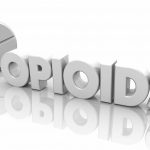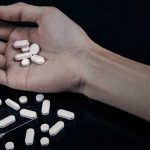According to the Centers for Disease Control and Prevention (CDC), U.S. drug overdose deaths have surged in recent years. In 2021, more Americans died of drug overdoses than ever before. Experts link this increase to pandemic-related stressors and the rise in fentanyl-laced drugs.
Drug Overdose Deaths In 2021
CDC data shows that 107,622 Americans died of drug overdoses in 2021, an almost 15% increase from the previous year.
More than 80,000 of those deaths involved opioids, and more than 71,000 opioid-related deaths involved synthetic opioid fentanyl.
Overdose fatalities involving psychostimulants also rose. In particular, cocaine-related deaths increased from 19,927 in 2020 to 24,538 in 2021, while meth-related deaths increased from 24,576 to 32,856.
Of all the states, Alaska had the largest percentage increase in overdose deaths (75.3%).
Why Have Overdose Deaths Surged?
According to Dr. Nora Volkow, director of the National Institute on Drug Abuse, the rise in overdose deaths has two main causes: the COVID-19 pandemic and fentanyl.
The COVID-19 Pandemic
Many people abuse substances to cope with stress. The COVID-19 pandemic brought numerous stressors, including isolation, job loss, and deaths of loved ones.
In addition, lockdowns prevented many people from accessing treatment for addiction and other mental health conditions. All of these issues led to a rise in substance abuse and, consequently, a rise in overdose deaths.
Fentanyl
Fentanyl is a synthetic (human-made) opioid that’s up to 50 times more powerful than heroin and 100 times more powerful than morphine. Doctors prescribe it to treat severe pain from cancer.
Recently, drug trafficking organizations have started illegally manufacturing fentanyl and adding it to other substances, including heroin, cocaine, and methamphetamine. This practice cuts production costs, as fentanyl is very cheap to manufacture.
Some traffickers even press fentanyl into pills and pass them off as popular prescription drugs such as Xanax and Adderall.
Fentanyl-laced drugs are typically identical to drugs that don’t contain fentanyl. That means you could accidentally ingest fentanyl any time you buy drugs off the street.
According to the United States Drug Enforcement Administration (DEA), just two milligrams of fentanyl (about the size of a grain of sand) could kill a person. That’s why, as mentioned above, 71,000 of the 107,622 overdose deaths in 2021 involved fentanyl.
How To Prevent Drug Overdose Deaths
Everyone can take steps to help lower the number of deaths from drug overdoses.
Education
First, educate your friends and family on how fentanyl has contaminated the illegal drug supply. Remind them that the only way to avoid fentanyl is to never use illegal drugs.
Naloxone
Next, consider keeping naloxone on hand, especially if you or someone you love uses illegal drugs. Naloxone (brand name Narcan) is a medication that can rapidly reverse the effects of an opioid overdose.
You can get it at most pharmacies without a prescription. It’s also available at harm reduction centers. Your pharmacist or doctor can show you how to use it.
Identify The Signs
Finally, you should learn the signs of a drug overdose. While signs can vary depending on the person and the drug, the most common signs include:
- dizziness
- nausea and vomiting
- confusion
- slow or difficult breathing
- slow heart rate
- pale, clammy skin
- bluish lips and/or fingernails
- seizures
- loss of consciousness
If you or someone you know experiences these symptoms, call 911 right away, and administer naloxone if you have it. As you wait for emergency responders to arrive, help the person who overdosed onto their side to prevent choking.
Drug Abuse & Addiction Treatment Options
The only way to avoid drug overdose is to only use drugs exactly as prescribed by a doctor. If you feel unable to stop abusing drugs, you may have substance use disorder (also called drug addiction). Common symptoms of this disease include:
- frequent drug cravings
- tolerance (needing increasingly larger or more frequent doses of a drug to feel the desired effects)
- physical dependence (experiencing withdrawal symptoms, such as anxiety and shaking, when you don’t use drugs)
- avoidance of friends and family members
- loss of interest in activities that don’t involve drugs
- loss of motivation
If you think you or someone you know has substance use disorder, seek professional help at a substance abuse treatment center.
Rehab centers provide a variety of recovery-focused services, including medical detox to manage withdrawal symptoms, mental health counseling to manage cravings and other psychological concerns, and aftercare planning to help you avoid future drug use and build a healthy, sober life.
To learn more about substance abuse treatment options, please reach out to Northeast Addictions Treatment Center. Our board-certified health care providers offer personalized, evidence-based care to help you stay drug-free.
Next:
- What Drug Causes The Most Deaths?
- 10 Deadliest States for Drug Overdoses in 2020
- Orange Tesla Ecstasy Pills
- What Is The Strongest Opioid?
Sources:
Centers for Disease Control and Prevention — U.S. Overdose Deaths In 2021 Increased Half as Much as in 2020 – But Are Still Up 15%
Centers for Disease Control and Prevention — Fentanyl Facts
National Public Radio — Overdose deaths continued to rise in 2021, reaching historic highs
United States Drug Enforcement Administration — Facts about Fentanyl





